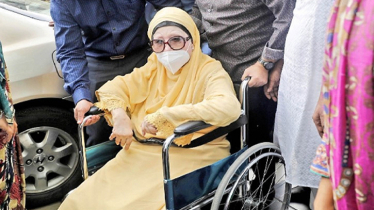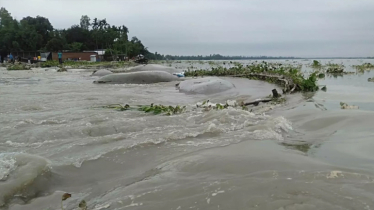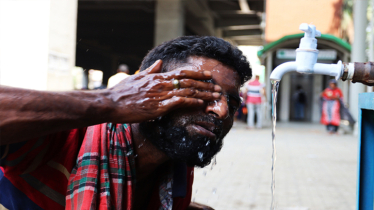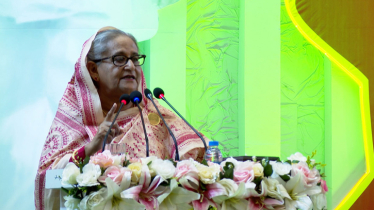
Photo: Daily Messenger
The heat has been steadily increasing since the day before Eid, but since Eid, an intense heatwave has swept across the country, engulfing it in scorching temperatures. Weather experts suggest that only storms and rainfall can alleviate this heat. Despite occasional showers and thunderstorms, the relentless heat persists, with indications that it may continue throughout the month of April.
Rather than experiencing the usual warmth associated with this season, the heat has intensified to an unbearable level, causing discomfort and distress. This extreme heat has not only impacted people's productivity but has also led to an increase in various diseases. Particularly, laborers and rural inhabitants are bearing the brunt of this heatwave.
According to data from the Bangladesh Meteorological Department (BMD), the highest temperature recorded on April 17 in Bangladesh was 40.4 degrees Celsius in Rajshahi, while it reached 36.3 degrees Celsius in the capital city. On Thursday, April 18, the temperature in Dhaka exceeded 36 degrees Celsius, with an average temperature of 40 degrees Celsius across Bangladesh. Similar high temperatures have persisted nationwide over the past few days, including in the capital.
The temperature has become unbearably humid at this time of the last two years. Even if there is a gust of wind or kalbaisakhi (nor’wester) in the afternoon after the intense heat of the day, it is not able to reduce the pain of the heat much. A group of researchers from four universities in the world say that in the last six decades, the number of days of intense and unbearable heat has increased three times in Dhaka alone. In the big cities outside Dhaka, the comfort has decreased, and the days of intense hot weather have increased up to seven times.
According to the study, in 1961, the number of comfortable days in Dhaka was 80 throughout the year. And the number of days of discomfort in intense heat was 7. In 2020, the number of comfortable days decreased to 66 and the number of difficult days increased to 21. At the same time, comfortable days in Sylhet decreased from 80 to 67 and difficult days increased from 14 to 20. In Chittagong and Rajshahi, the number of hot days has increased by three and two times.
Weather specialist Abul Kalam Mallik told The Daily Messenger, April is a humid month. This heat is reduced by Baisakhi storms, rain and hail. He said that it has been raining in different parts of the country for the last two or three days but still the temperature is not decreasing. Rather, after 30 minutes or 1:30 minutes of rain, it feels sticky hot again. People are becoming helpless in this heat of discomfort.
Meteorologist Hafizur Rahman told The Daily Messenger that the extension of the western low pressure is staying in West Bengal and adjacent areas. Seasonal normal low air pressure is located over South Bay of Bengal. As a result, the temperature may increase further in the next 4 to 5 days.
During this time, mild to intense heat flow may continue over the country. An excess of water vapor may increase discomfort.
He said that rain and thunderstorm temporarily may occur in Rangpur, Rajshahi, Dhaka, Mymensingh, Barisal, Chattogram and some other places in Sylhet division. Along with that there may be scattered hail storm at some places. Elsewhere in the country, the weather will remain mainly dry with partly cloudy sky.
As a result, severe heat will flow over Rajshahi, Pabna, Bagerhat, Jashore, Chuadanga and Kushtia districts and mild to moderate heat flow will occur over the rest of Rajshahi and Khulna divisions including Moulvibazar district of along with Dhaka, Rangpur and Barisal divisions.
Messenger/Fameema










